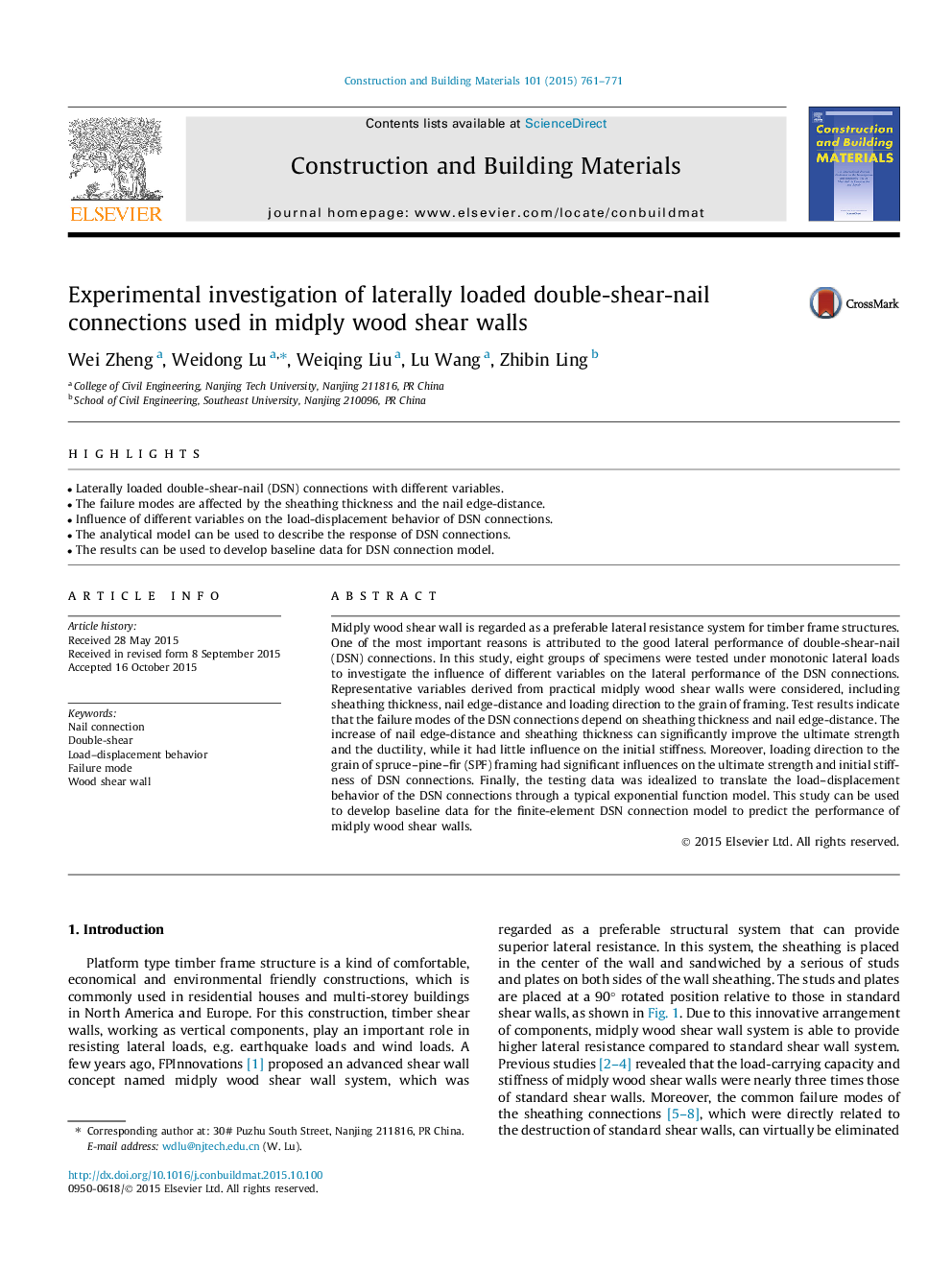| Article ID | Journal | Published Year | Pages | File Type |
|---|---|---|---|---|
| 256408 | Construction and Building Materials | 2015 | 11 Pages |
•Laterally loaded double-shear-nail (DSN) connections with different variables.•The failure modes are affected by the sheathing thickness and the nail edge-distance.•Influence of different variables on the load-displacement behavior of DSN connections.•The analytical model can be used to describe the response of DSN connections.•The results can be used to develop baseline data for DSN connection model.
Midply wood shear wall is regarded as a preferable lateral resistance system for timber frame structures. One of the most important reasons is attributed to the good lateral performance of double-shear-nail (DSN) connections. In this study, eight groups of specimens were tested under monotonic lateral loads to investigate the influence of different variables on the lateral performance of the DSN connections. Representative variables derived from practical midply wood shear walls were considered, including sheathing thickness, nail edge-distance and loading direction to the grain of framing. Test results indicate that the failure modes of the DSN connections depend on sheathing thickness and nail edge-distance. The increase of nail edge-distance and sheathing thickness can significantly improve the ultimate strength and the ductility, while it had little influence on the initial stiffness. Moreover, loading direction to the grain of spruce–pine–fir (SPF) framing had significant influences on the ultimate strength and initial stiffness of DSN connections. Finally, the testing data was idealized to translate the load–displacement behavior of the DSN connections through a typical exponential function model. This study can be used to develop baseline data for the finite-element DSN connection model to predict the performance of midply wood shear walls.
